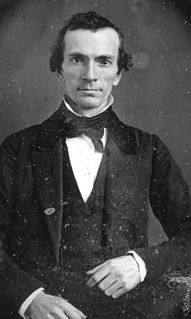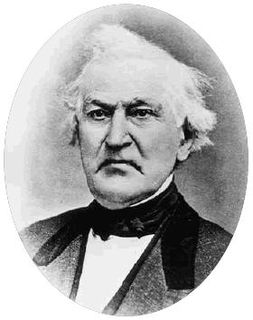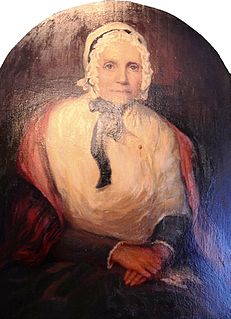
Poultney is a town in Rutland County in the southwestern part of the U.S. state of Vermont. New York state is on its western border. Castleton, Vermont, is on its northern border. Poultney was home to Green Mountain College, a private liberal arts college that closed in 2019. The Village of Poultney is entirely within the town. The town population was 3,020 at the 2020 census.

The First Vision refers to a theophany that Joseph Smith said he received in the early 1820s, in a wooded area in Manchester, New York, called the Sacred Grove by Latter-day Saints. Smith described it as a vision in which he received instruction from God the Father and Jesus Christ.

According to Latter Day Saint belief, the golden plates are the source from which Joseph Smith translated the Book of Mormon, a sacred text of the faith. Some witnesses described the plates as weighing from 30 to 60 pounds, gold in color, and composed of thin metallic pages engraved with hieroglyphics on both sides and bound with three D-shaped rings.

Oliver H. P. Cowdery was an American Mormon leader who, with Joseph Smith, was an important participant in the formative period of the Latter Day Saint movement between 1829 and 1836. He was the first baptized Latter Day Saint, one of the Three Witnesses of the Book of Mormon's golden plates, one of the first Latter Day Saint apostles, and the Second Elder of the church.

According to Latter Day Saint theology, seer stones were used by Joseph Smith, as well as ancient prophets, to receive revelations from God. Members of The Church of Jesus Christ of Latter-day Saints believe that Smith used seer stones to translate the Book of Mormon.

Cumorah is a drumlin in Palmyra, New York, United States, where Joseph Smith said he found a set of golden plates which he translated into English and published as the Book of Mormon.

David Whitmer was an American Mormon leader who eventually became the most interviewed of the Three Witnesses to the Book of Mormon's golden plates.

Lucy Mack Smith was the mother of Joseph Smith, founder of the Latter Day Saint movement. She is noted for writing the memoir, Biographical Sketches of Joseph Smith, the Prophet, and His Progenitors for Many Generations and was an important leader of the movement during Joseph's life.
Dennis Michael Quinn was an American historian who focused on the history of The Church of Jesus Christ of Latter-day Saints. He was a professor at Brigham Young University (BYU) from 1976 until he resigned in 1988. At the time, his work concerned church involvement with plural marriage after the 1890 Manifesto, when new polygamous marriages were officially prohibited. He was excommunicated from the church as one of the September Six and afterwards was openly gay. Quinn nevertheless identified as a Latter-day Saint and continued to believe in many LDS teachings, though he did not actively practice the faith.

The Three Witnesses is the collective name for three men connected with the early Latter Day Saint movement who stated that an angel had shown them the golden plates from which Joseph Smith translated the Book of Mormon; they also stated that they had heard God's voice, informing them that the book had been translated by divine power. The Three are part of twelve Book of Mormon witnesses, who also include Smith and the Eight Witnesses.

Joseph Smith was an American religious leader and the founder of the Latter Day Saint movement whose current followers include members of The Church of Jesus Christ of Latter-day Saints, the Community of Christ, and other Latter Day Saint denominations. The early life of Joseph Smith covers his life from his birth to the end of 1827.

The life of Joseph Smith from 1827 to 1830, when he was 22–25 years old, includes some of his life's most significant events, and some of the most important history of the Latter Day Saint movement, the Restorationist religious movement he initiated during this period. This movement gave rise to Mormonism, and includes such denominations as The Church of Jesus Christ of Latter-day Saints and the Community of Christ. The period covered by this article begins in late 1827, after Smith announced he had obtained a book of golden Plates buried in a hill, guarded by an angel, near his home in Manchester, New York. See Early life of Joseph Smith Because of opposition by former treasure-seeking colleagues who believed they owned a share of the golden plates, Smith prepared to leave the Palmyra area for his wife's home town of Harmony, Pennsylvania. From late 1827 to the end of 1830, Smith would translate the golden plates, publish the Book of Mormon, and establish the Church of Christ.

View of the Hebrews is an 1823 book written by Ethan Smith, a Congregationalist minister in Vermont, who argued that Native Americans were descended from the Ten Lost Tribes of Israel, a relatively common view during the early nineteenth century. Numerous commentators on Mormon history, from LDS Church general authority B. H. Roberts to Fawn M. Brodie, biographer of Joseph Smith, have noted similarities in the content of View of the Hebrews and the Book of Mormon, which was first published in 1830, seven years after Ethan Smith's book.

The Book of Mormon witnesses were a group of contemporaries of Joseph Smith who claimed to have seen the golden plates from which Smith translated the Book of Mormon. The most significant witnesses were the Three Witnesses and the Eight Witnesses, all of whom allowed their names to be used on two separate statements included with the Book of Mormon. None of the witnesses ever denied what they saw.

There are several explanations as to the origin of the Book of Mormon. Adherents to the Latter Day Saint movement view the book as a work of divinely inspired scripture. Secular theories of authorship propose that it is solely the work of man.
Nathaniel Wood, Sr. was the leader of a sect called the New Israelites, which was formed in Middletown, Rutland County, Vermont at the end of the 1790s. Wood emigrated from Newent Parish in Norwich, Connecticut to Bennington, Vermont. From Bennington he moved to Rutland County in 1761. Wood may have been influenced by the Newent Separates of Norwich, who believed in perfectionist immortalism and spiritual wifery, and the preaching of Rev. Joel Benedict, who taught that Hebrew was the angelic tongue. Wood was excommunicated from the local Congregationalist church in 1789. Subsequently, he began to preach to small meetings whose attendees were mostly family and relatives.

This is a chronology of Mormonism. In the late 1820s, Joseph Smith, founder of the Latter Day Saint movement, announced that an angel had given him a set of golden plates engraved with a chronicle of ancient American peoples, which he had a unique gift to translate. In 1830, he published the resulting narratives as the Book of Mormon and founded the Church of Christ in western New York, claiming it to be a restoration of early Christianity.

Joseph Smith Jr. was an American religious leader and founder of Mormonism and the Latter Day Saint movement. When he was 24, Smith published the Book of Mormon. By the time of his death, 14 years later, he had attracted tens of thousands of followers and founded a religion that continues to the present with millions of global adherents.
Ethan Smith (1762–1849) was a New England Congregationalist clergyman in the United States who wrote View of the Hebrews (1823), a book that argued that Native Americans were descended from the Ten Lost Tribes of Israel. His position was not uncommon among religious scholars, who based their history on the Bible.











